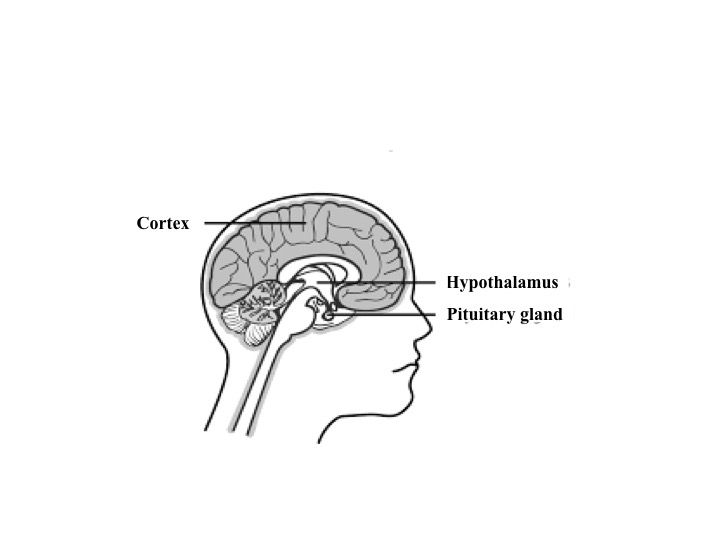This gland, alsocalled the hypophysis, is a pea-sized endocrine gland (weighing about 0.5 gr. inhuman adult) situated in a bony hollow structure (sella turica) at the base ofthe brain (see figure below). It isreferred to as the ‘master gland’ as it exerts control over a number of otherhormone glands, including the adrenals, ovaries and testicles. It consists of three parts or lobes: theanterior pituitary (or adenohypophysis) that regulates several physiologicalprocesses (e.g., stress, growth, reproduction, lactation) the intermediate lobe thatsynthesizes and secretes melanocyte-stimulating hormones (responsible for theproduction and release of melanin), and the posterior pituitary (orneurohypophysis) functionally connected to the hypothalamus by thepituitary stalk. The gland itself iscontrolled in turn by the hypothalamus. Together they detect levels of hormones secreted by glands under thecontrol of the pituitary, thus determining how much stimulation these targetglands require. The pituitary glandappears early in gestation, with the adenohypophysisand shortly thereafter the neurohypophysis, both emerging from ectodermal tissue,that later fuse into each other while still remaining distinct structures.
